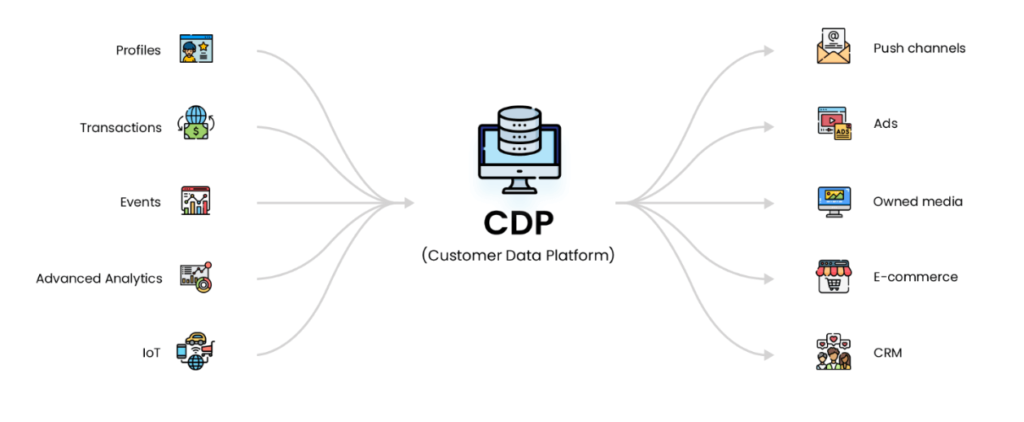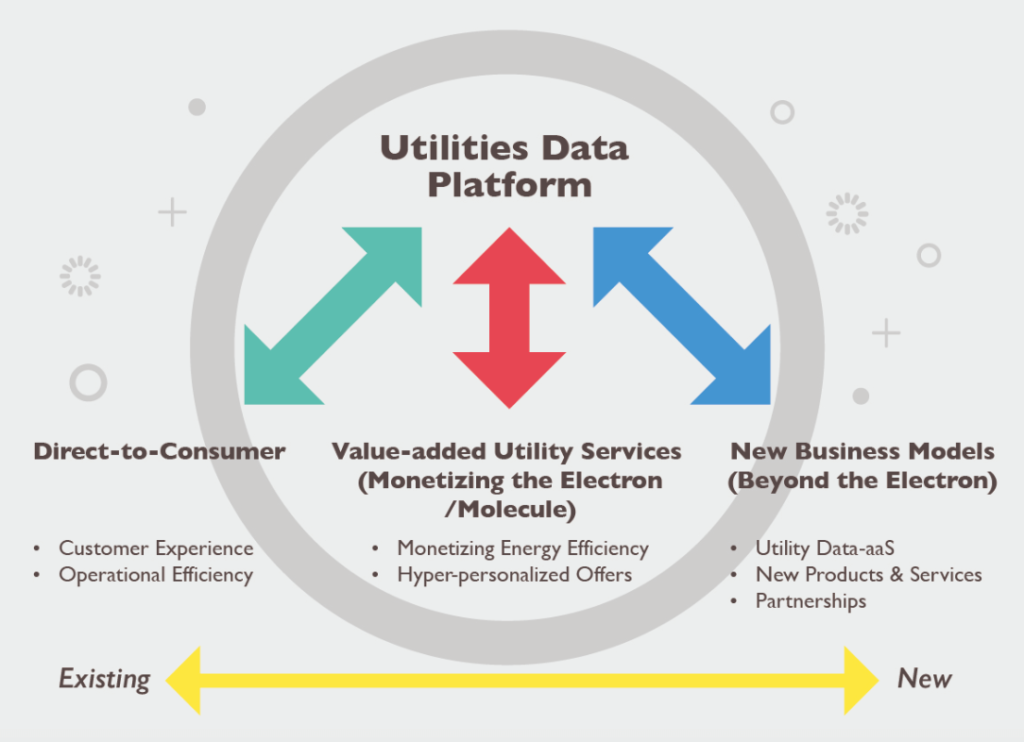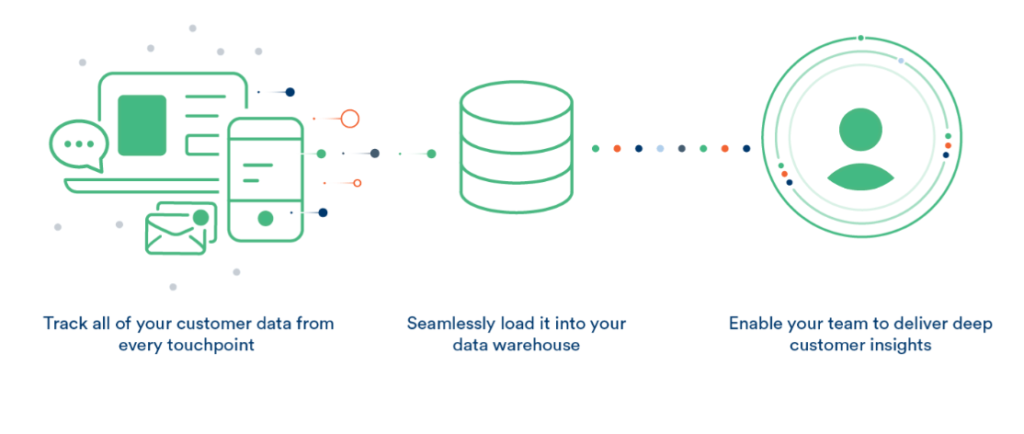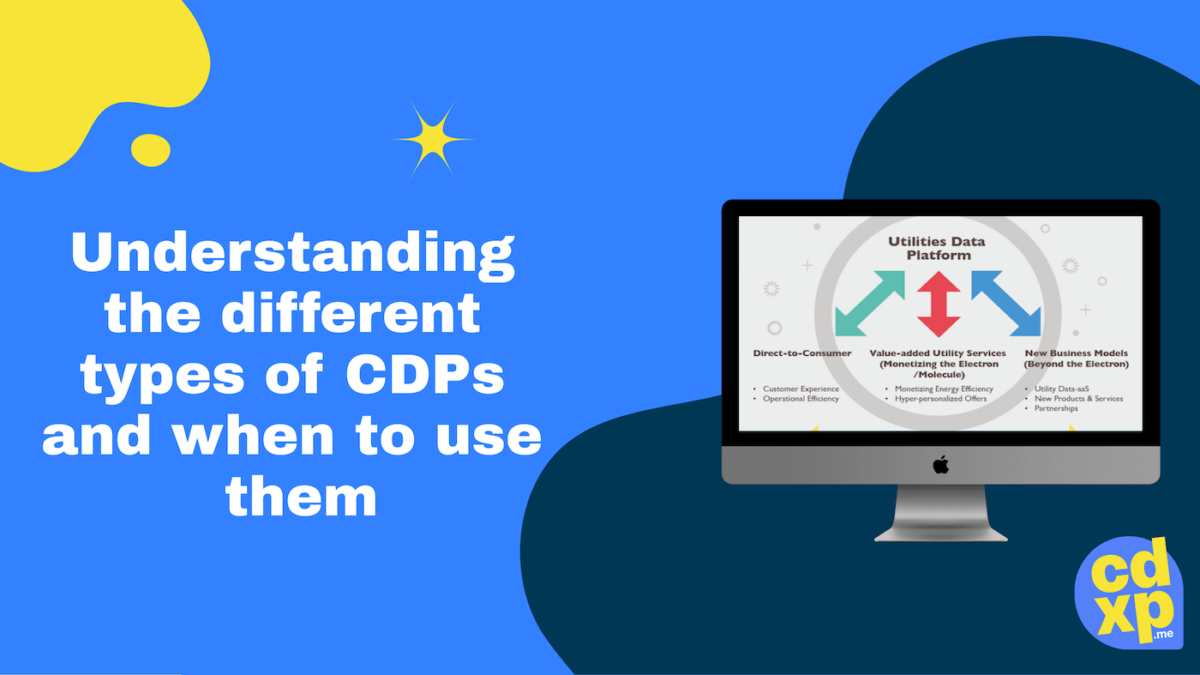Do you want to stay ahead of the competition? Are you looking for ways to maximize your customer engagement and increase sales? If so, then understanding Customer Data Platforms (CDPs) is essential. In this blog post, we’ll explain the different types of CDPs and when to use them.
Introduction to the types of CDPs
A Customer Data Platform (CDP) is a piece of software that unifies the company’s customer data from marketing and other channels into a single, centralized customer database. It combines data from different sources, such as online forms, surveys, email campaigns, and website visits, to create comprehensive profiles of customers.
This enables companies to gain better insights into their customers’ behavior and preferences, as well as identify trends in customer behavior. CDPs are used to track and analyze customer data in order to provide personalized marketing experiences and increase customer engagement. By understanding the various types of CDPs, companies can choose the one that best suits their needs and goals.

Data Consolidation and Unification CDPs
Data Consolidation and Unification CDPs are an essential way to collect, integrate, and store customer data from multiple sources.
These types of CDPs are able to combine structured, semi-structured, and unstructured data for a single unified view of customers. This enables companies to gain an in-depth understanding of their customers and develop targeted strategies to personalize their experiences.
Additionally, these CDPs can be used to improve customer segmentation and automated customer journey personalization. By taking advantage of the data consolidation capabilities of a CDP, businesses can increase customer satisfaction and loyalty while also improving their marketing ROI.
Identity and Engagement CDPs
Identity and Engagement CDPs are designed to help marketers build relationships with their customers by providing insights into customer behavior. These CDPs enable marketers to identify customers across different channels, collect data about them, and use this data to create personalized experiences.
These types of CDPs are also useful for segmentation, allowing marketers to group customers according to their preferences and interests. By leveraging the insights gathered from these CDPs, marketers can create more effective campaigns and better target their messages to their audiences.
Additionally, Identity and Engagement CDPs are an integral part of the customer data integration process, as they allow marketers to unify customer data from different sources into unified profiles.
Analytics and Insights CDPs
Analytics and Insights CDPs are designed to provide detailed insights into customer behavior and preferences, allowing businesses to make more informed decisions about their marketing and advertising campaigns.
These CDPs use enriched data to provide comprehensive reports that help marketers understand the customer journey, identify key trends, and optimize campaigns for better performance.
By leveraging the data gathered from multiple sources, these CDPs can also help businesses identify new opportunities for growth and discover new target audiences.
Data Management-Oriented CDPs
Data Management-Oriented CDPs (DMPs) are a type of customer data platform that focuses on the data management side of marketing. These CDPs are designed to provide marketers with access to unified customer data from different sources, allowing them to create holistic customer profiles.
DMPs also enable marketers to track customer activities across multiple channels and use this data to gain insights into customer behavior. Additionally, DMPs provide marketers with the ability to segment customers and target them with personalized campaigns. With their powerful data management capabilities, DMPs enable marketers to make better-informed decisions and drive growth for their businesses.
Utility CDPs
Utility CDPs are designed to help organizations manage customer data and make it more accessible to other tools. These CDPs provide a wide range of capabilities, including data enrichment and segmentation. They also offer an easy way to integrate customer data with other systems.
By leveraging the power of a Utility CDP, organizations can ensure that their customer data is accurate, up-to-date, and easily accessible. This helps them make more informed decisions about their customer base and better serve their customers.
With the ability to understand customer behavior more deeply, organizations can also gain valuable insights into their customer base which can be used to inform marketing and product strategies.

Tag Manager CDPs
Tag Manager CDPs are an integral part of the overall customer data platform landscape. These platforms are designed to help marketers collect and manage customer data without relying on engineering.
Tag Manager CDPs use tags, or snippets of code, to track the customer journey across different websites and sources. They are typically used with other customer data platforms, such as Identity and Engagement CDPs, Analytics and Insights CDPs, Data Management-Oriented CDPs, and Utility CDPs.
These platforms provide a comprehensive view of the customer’s journey from acquisition to conversion, allowing marketers to create more engaging and customized experiences for their customers. Tag Manager CDPs can help marketers increase efficiency, reduce costs, and improve customer segmentation.
Marketing Cloud CDPs
Marketing Cloud CDPs are the newest type of CDPs and are available from well-known cloud providers. These platforms are great at capturing data and allow organizations to integrate customer data from multiple sources into a single view.
They also enable analytics and activation, as well as predictive capabilities. These types of CDPs are cloud-based and typically aligned to a vendor’s existing product line, encouraging marketers to integrate with various systems such as email-send engines and content management systems. As the newest form of CDPs, Marketing Cloud CDPs offer the most advanced capabilities for data enrichment, segmentation, and workflow optimization.
Customer Data Integration
Customer Data Integration is a process that allows companies to combine data from multiple customer sources and create a unified view of customer behavior.
This unified view allows marketers to gain deeper insights into their customers and create better customer experiences. CDPs are essential for this process, as they provide the necessary tools for consolidating and integrating customer data from disparate sources.
This includes data from CRMs, web analytics, surveys, social media, and more. By leveraging the power of CDPs, businesses can gain an understanding of customer behavior across multiple channels and create a comprehensive view of the customer journey.
With this knowledge, marketers can develop personalized campaigns that deliver more relevant experiences to customers.
Storing Data with MySQL, MongoDB, and Cassandra
When it comes to storing customer data, the primary options are typically a relational database such as MySQL, a document store like MongoDB, or a NoSQL database like Cassandra.
Each of these databases offers different advantages, and CDP users must carefully consider the specific needs of their project before deciding which one is best suited for their use case.
MySQL is ideal for storing structured data and performing traditional SQL queries, while MongoDB and Cassandra are better suited for scalability and working with unstructured data. For instance, MongoDB is especially useful for working with large datasets that contain multiple data types. On the other hand, Cassandra is well-suited for applications that require real-time data analysis and fast write operations. Ultimately, each database has its own unique set of features and capabilities that must be taken into account when selecting the best option for storing customer data.

Conclusion
In conclusion, Customer Data Platforms (CDPs) are powerful tools that can help businesses better understand and engage with their customers. With the right CDP, businesses can build unified customer profiles, gain insights into customer behavior, and drive a data-informed and customer-centric marketing approach.
There are several types of CDPs on the market, each designed to provide different kinds of data and services. Businesses should consider their own data requirements, use cases, and marketing goals when selecting the right CDP for their business.
By leveraging a CDP, businesses can create better customer experiences and drive greater ROI from their marketing efforts.
If you are still struggling with choosing the right CDP, contact us at CDXP.me. We will be happy to help you.
